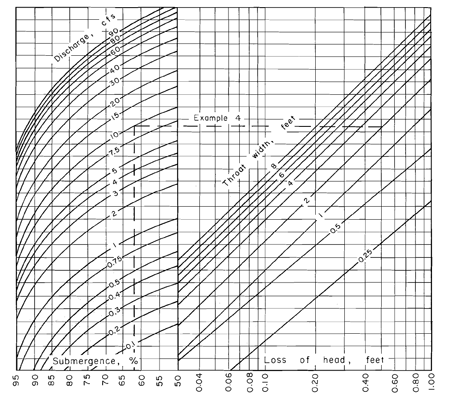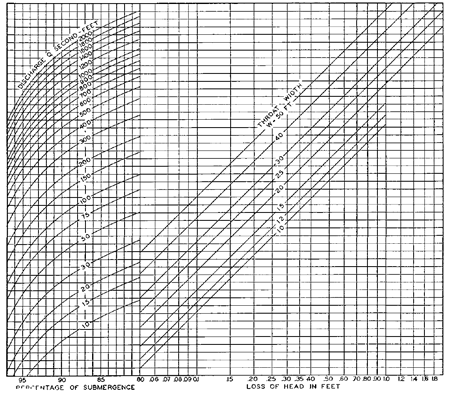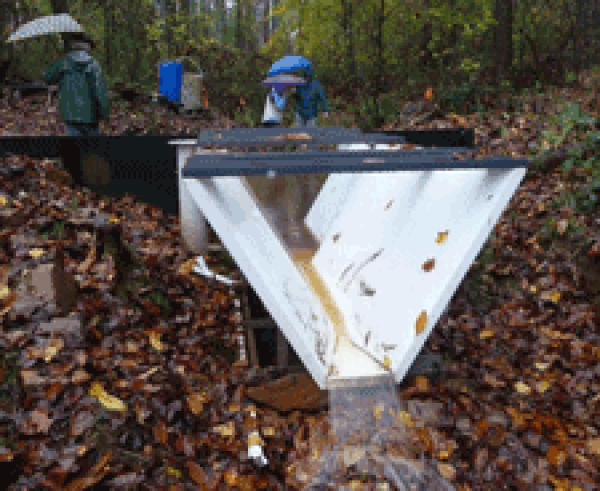This website uses a variety of cookies, which you consent to if you continue to use this site. You can read our Privacy Policy for
details about how these cookies are used, and to grant or withdraw your consent for certain types of cookies.
Calculating Head Loss in Parshall Flumes
Parshall Flumes – like all flumes - are obstructions placed in a flow stream that produce backwater. This backwater extends upstream of the flume and raises the water surface in the approach channel. The difference in water surface elevation with and without the flume is the head loss caused by the flume.

The head loss through a Parshall flume is not, however, equal to the difference in elevation between the head at the primary and secondary points of measurement, ha and hb respectively.
The locations for ha and hb are somewhat arbitrary and the head loss through a Parshall flume is somewhat greater than the difference in head between these two locations.
Various authors have presented charts for calculating head loss in Parshall flumes, but the charge presented by Skogerboe et al (1966) provide allows for head loss calculation for the most common sizes of Parshall flumes – those from 3-inches to 8-feet.
Bos (1978) provides two charts for calculating Parshall flume head loss; one for Parshall flumes from 12-inches to 8-feet and another for flumes from 10-feet to 50-feet. In practice, the larger flumes sizes are rarely used and Skogerboe’s chart extends to some of the smaller sizes of Parshall flumes.
The Bureau of Reclamation’s Water Measurement Manual provides charts similar to Bos, compiled from Parshall (1953 – Reprint of 1932) and the U.S. Natural Resources Conservation Service, but the charts are not as clear those presented by Bos.
No data exists for many of the small Parshall flumes from which head loss can be determines. The assumption is that head loss can be calculated by taking the difference between ha and hb. Technically speaking this is not true, but such an assumption is usually made for small Parshall flumes (Skogerboe et al 1966).
Image: Aspen Ranch Real Estate
Sources: Bos, M., Discharge Measurement Structures, Publication No. 20, International Institute for Land Reclamation and Improvements (ILRI), Wageningen, The Netherlands, 1978, Parshall, R., Parshall Flumes of Large Size, Bulletin 386, Colorado Experiment Station, Colorado Agricultural College, May, 1932, Skogerboe, G., Hyatt, M., England, J., Johnson, J., Measuring Water with Parshall Flumes, WRG-4, EC-323, Utah Water Research Laboratory, Utah State University Extension Services, 1966
Related Blog Posts
Explore more insights in our blog.

LOCATIONS IN ATLANTA, GA & BOISE, ID






